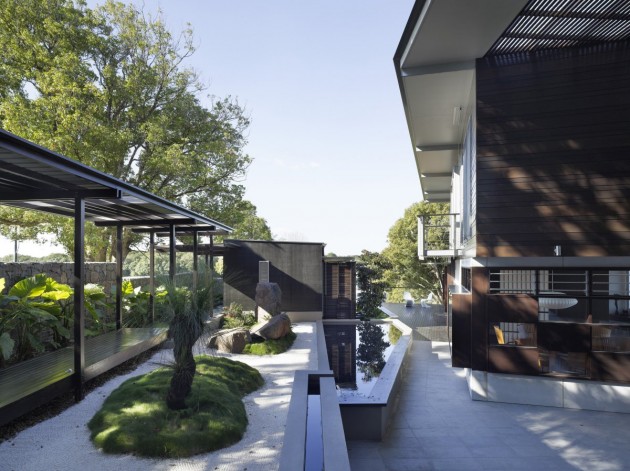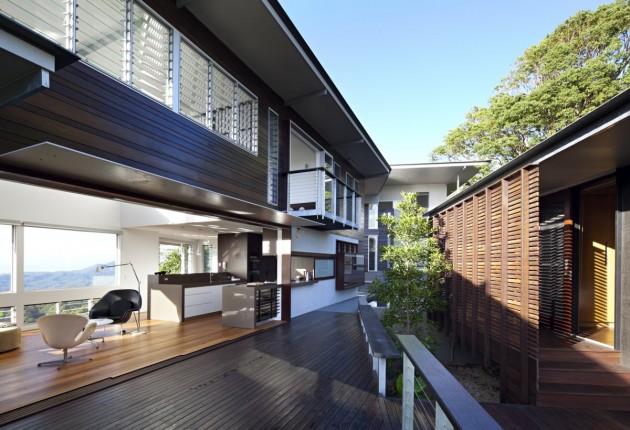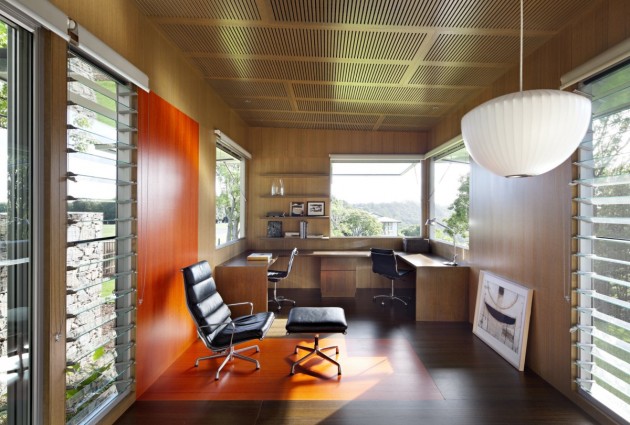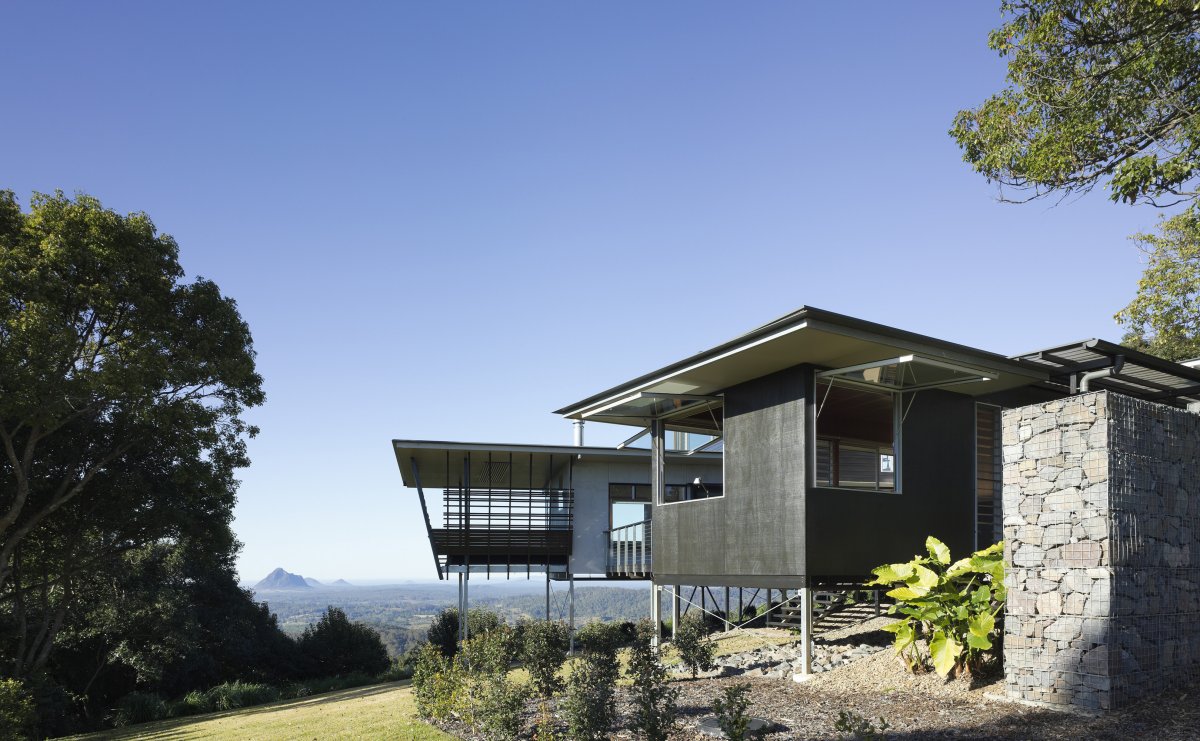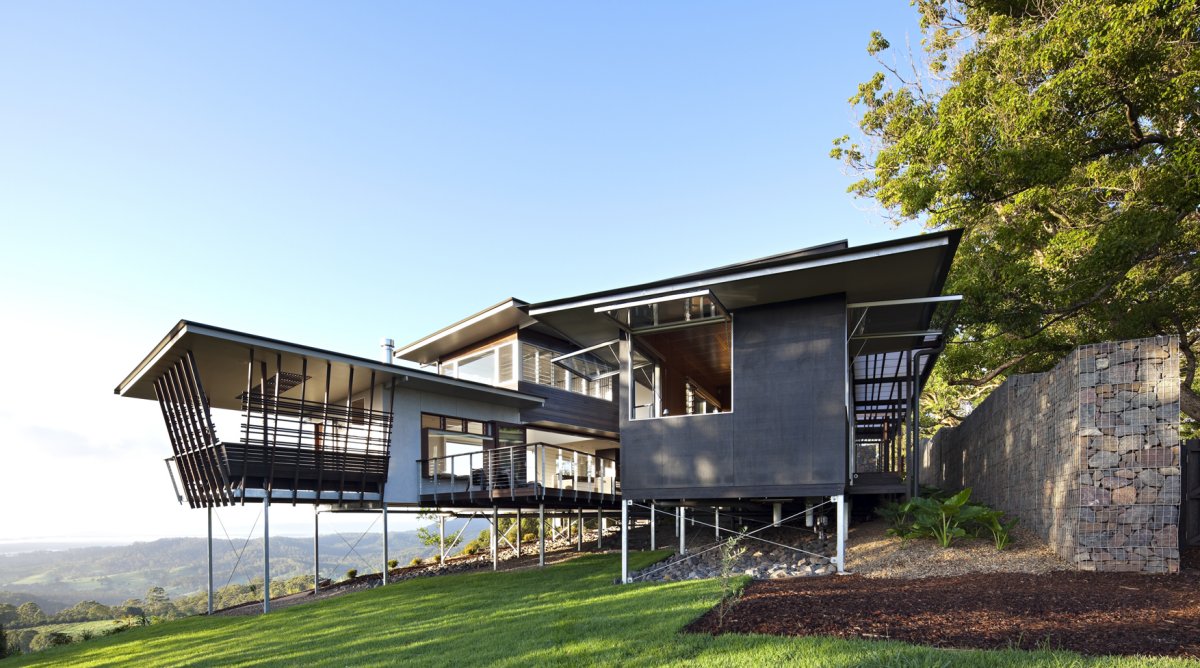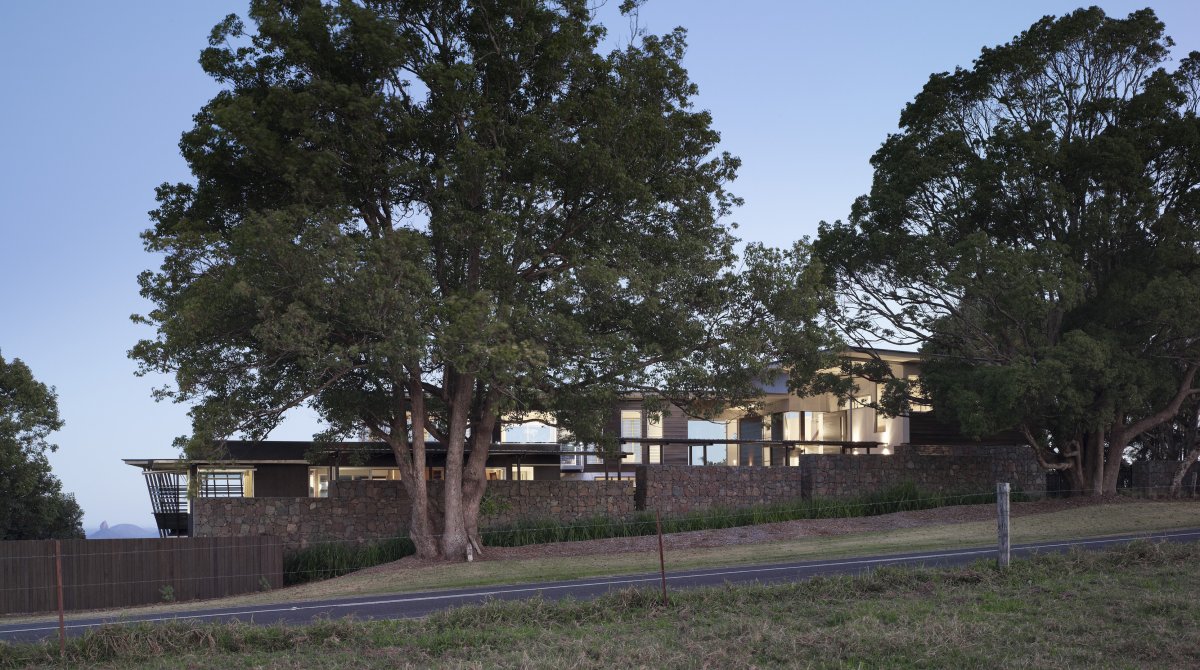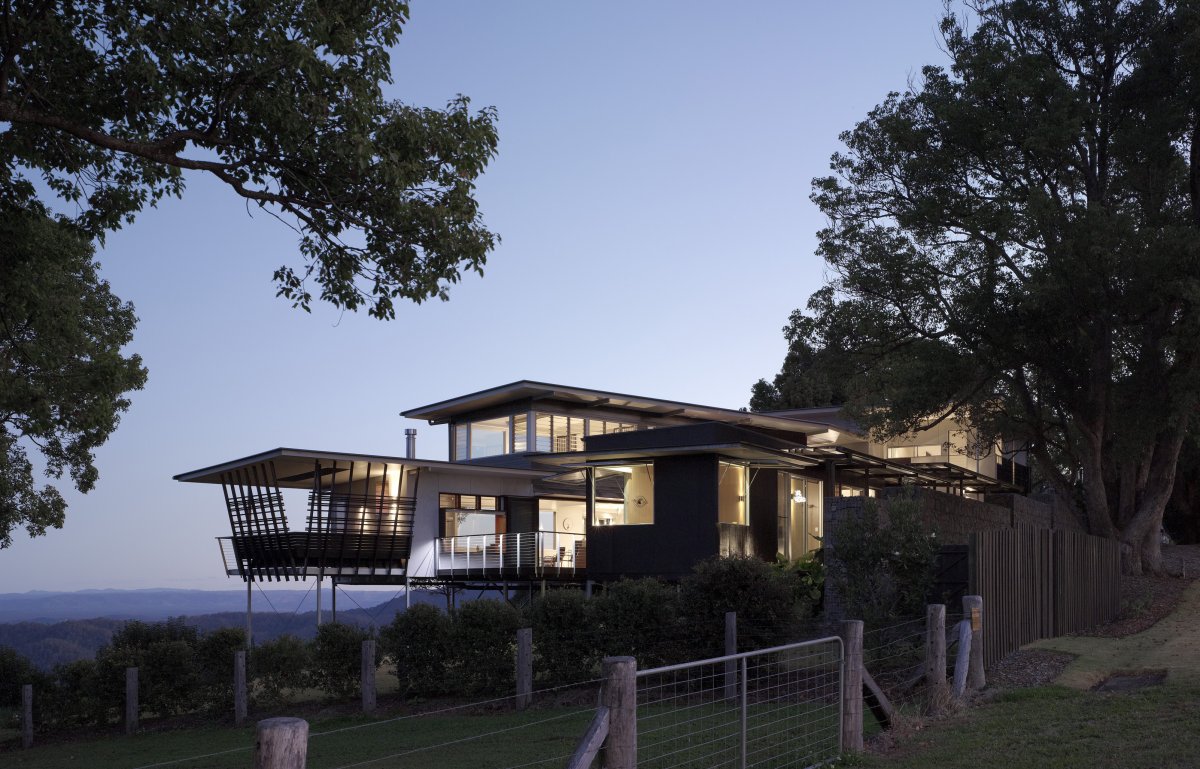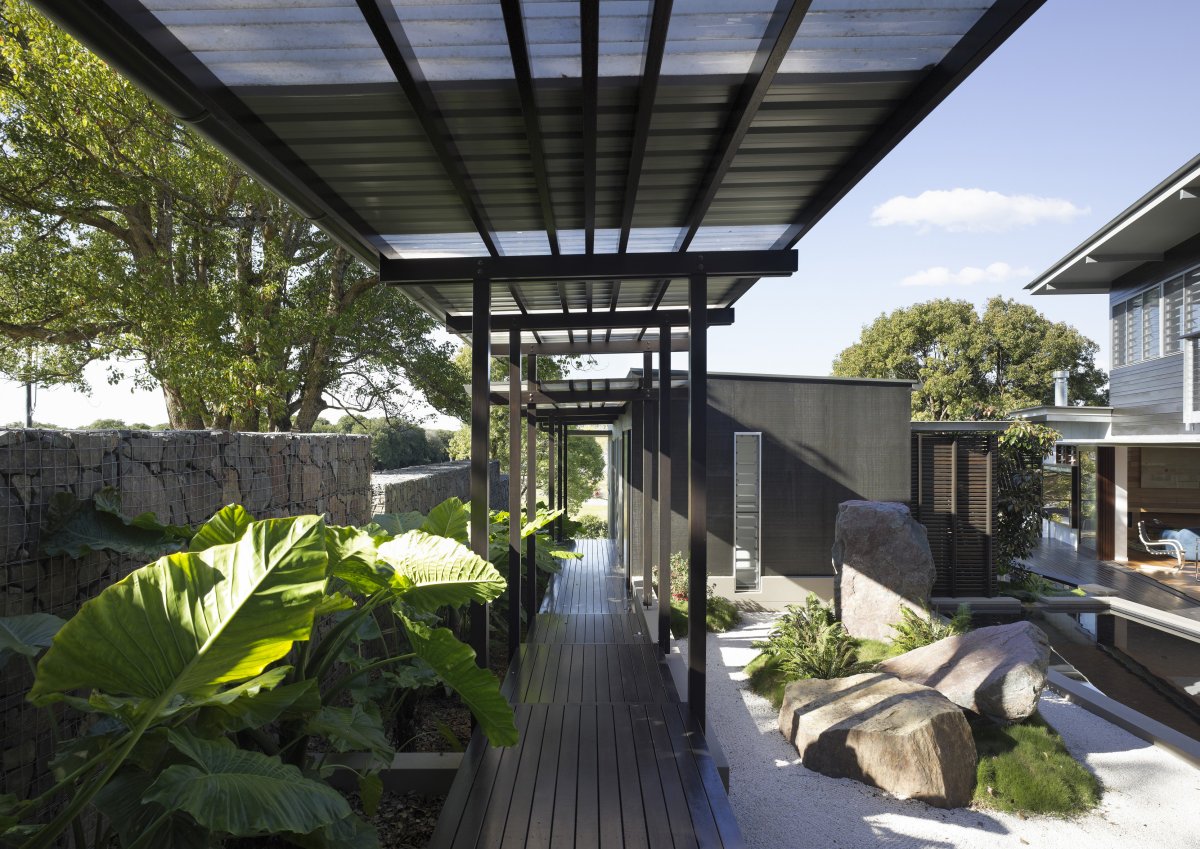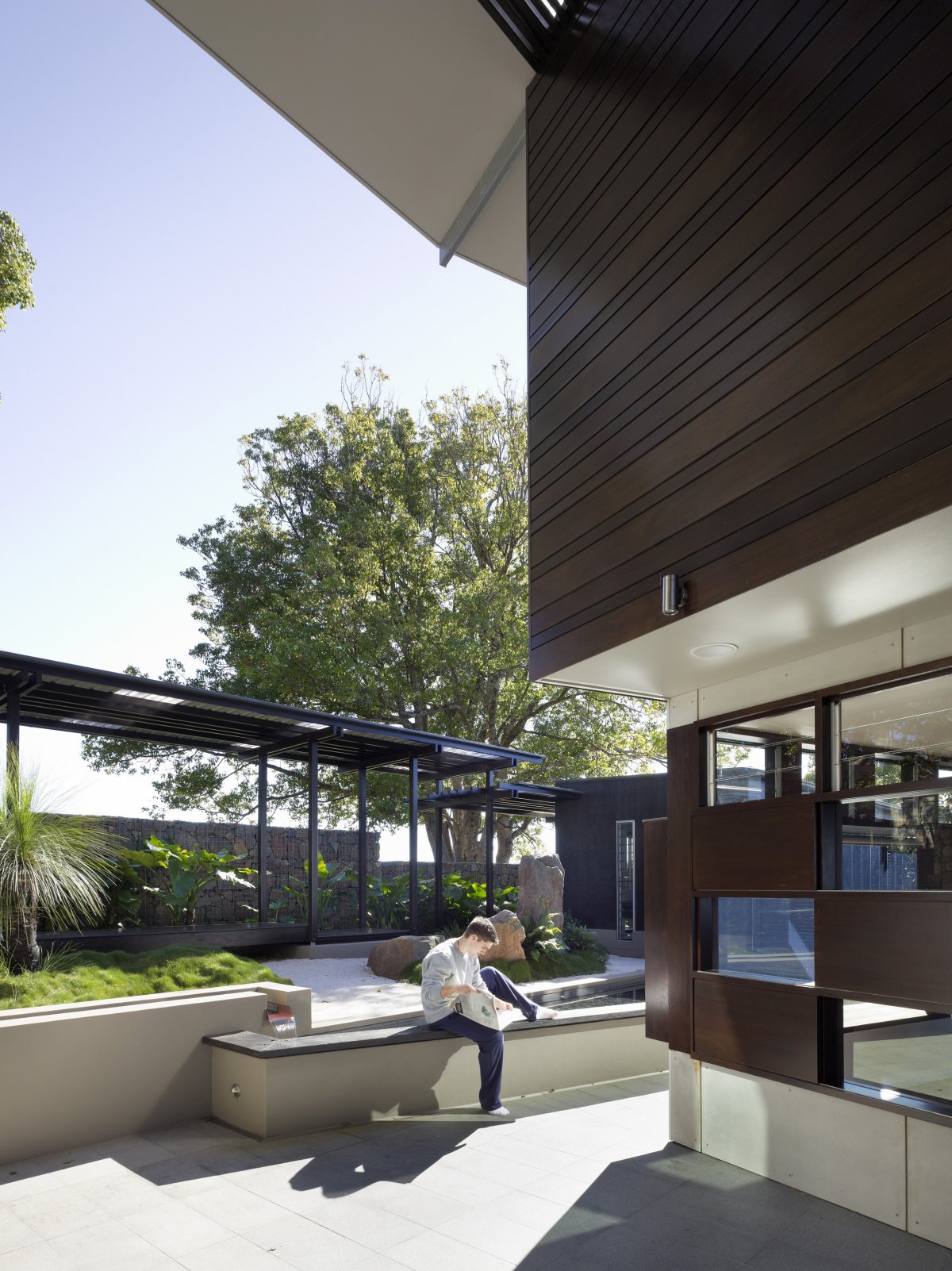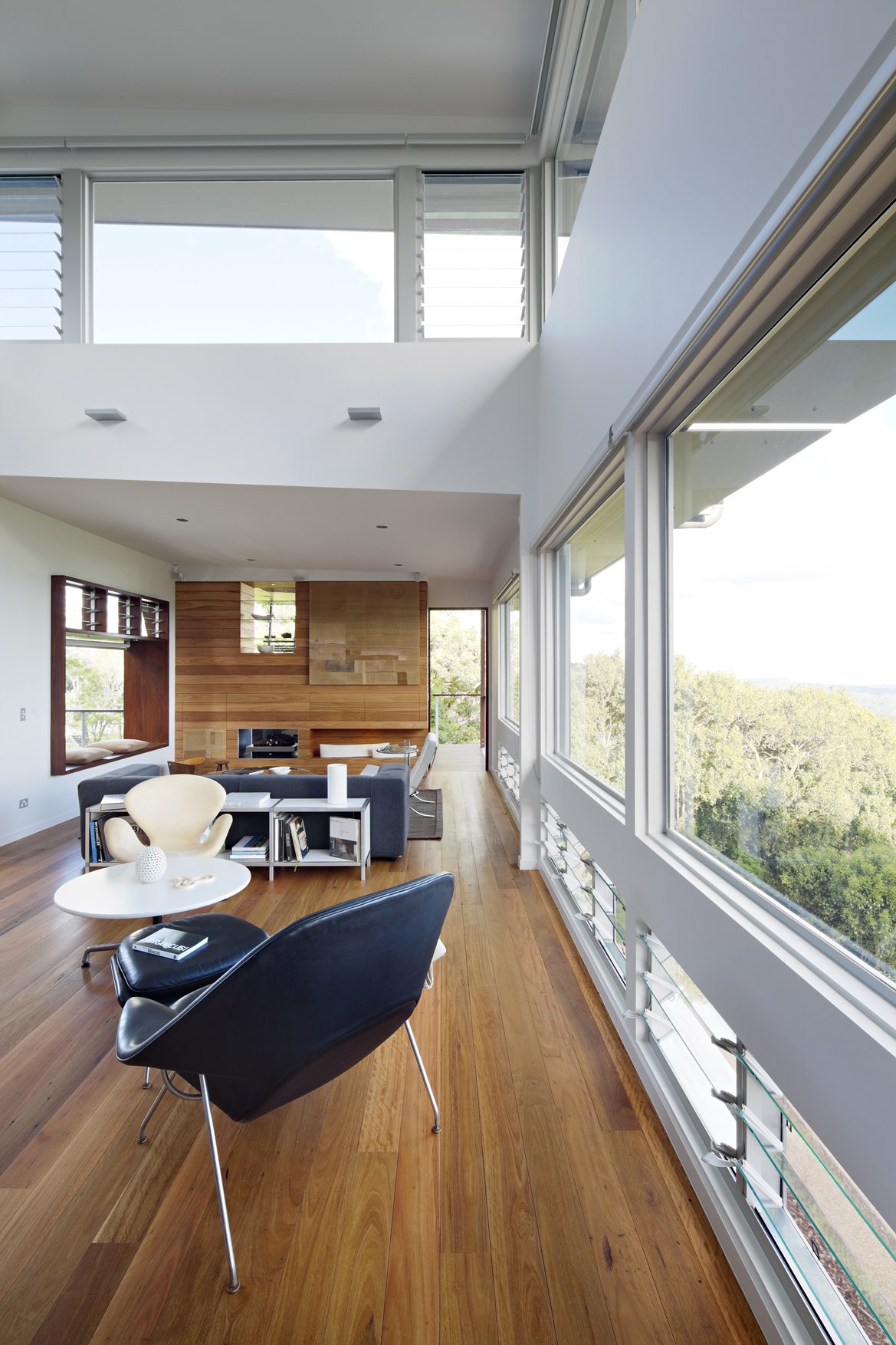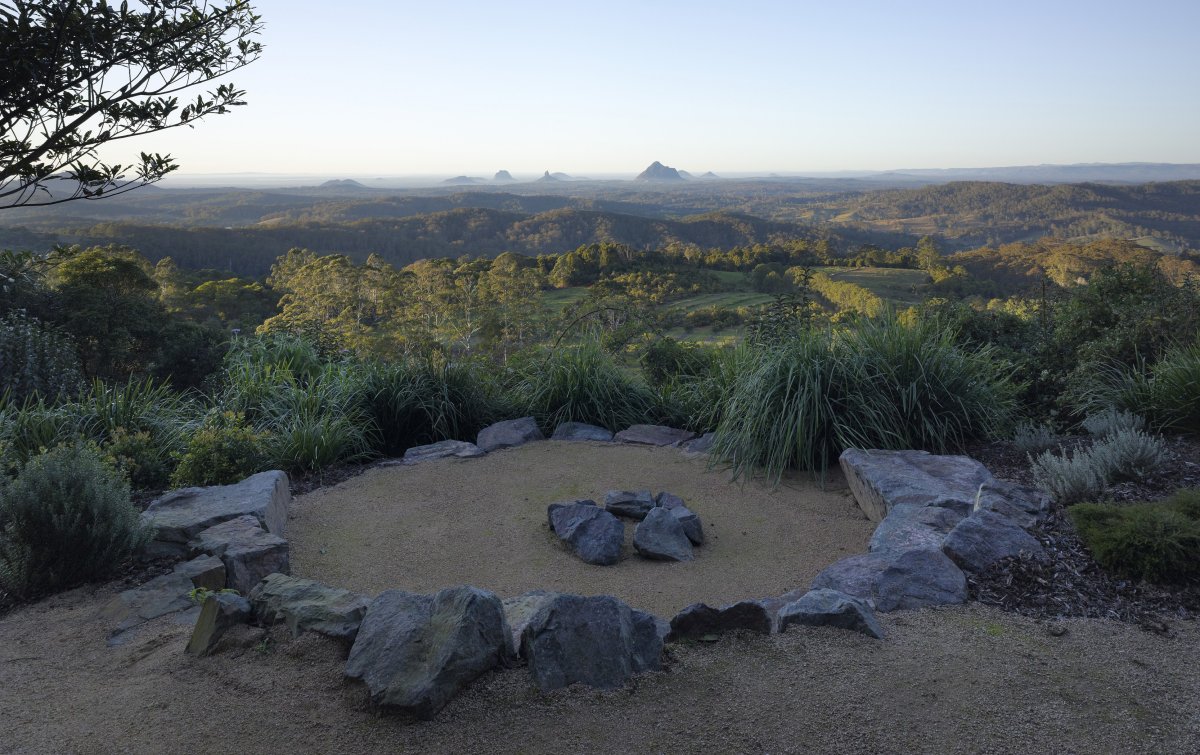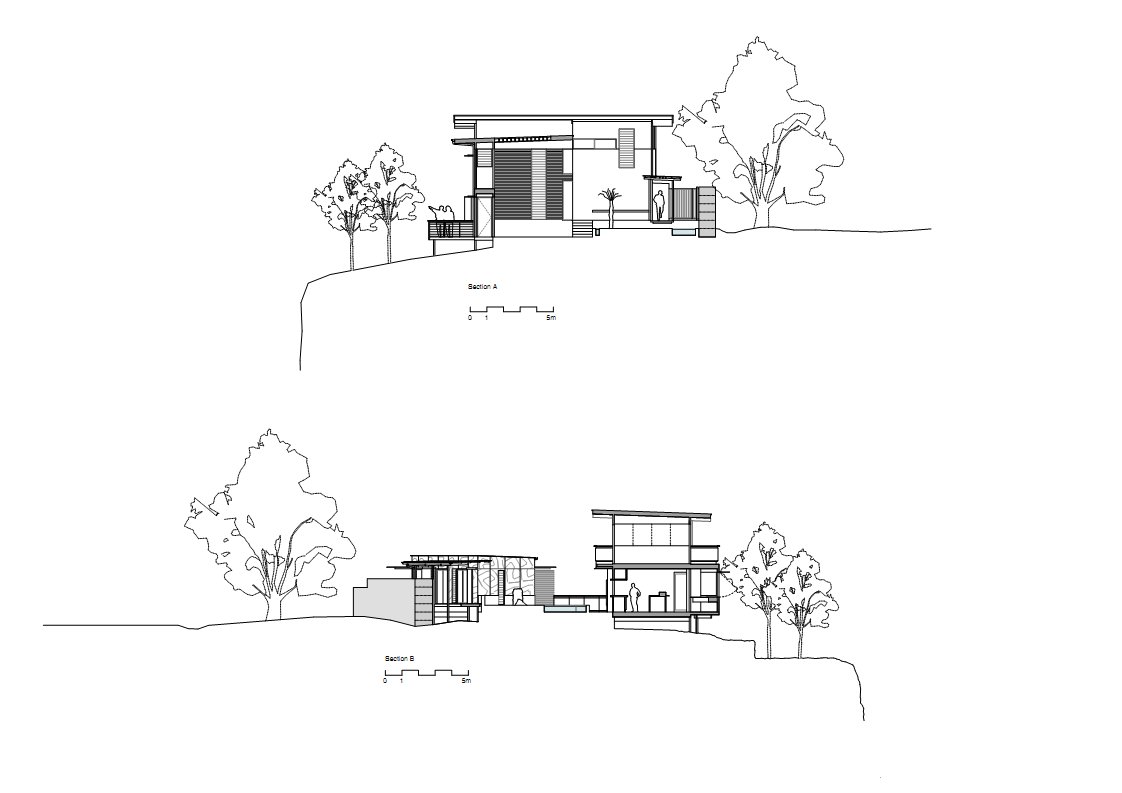Bark Design Architects designed the Maleny House on Australia’s Sunshine Coast.
Project description
The ‘Glass House Mountain House’ in Maleny, celebrates its site, perched on the edge of the remnant rim of the Glass House range, as well as the essence of its place – ‘sky and mountains’. Translated into a place of ‘glass and stone’ inextricably connected to its landscape it has qualities of being anchored, robust and earthbound as well as being transparent, light and floating.
Memorable to the experience is the ‘sanctuary’ of the courtyard space, whose edges are defined by ambiguous indoor outdoor thresholds of the transparent internal spaces, sitting between the refuge of a monumental basalt ‘Garden Wall’ and the broader natural volcanic landscape. Engaging with existing topography, orientation, views and vegetation, the house balances economy and fine craft.
It celebrates economical finishes, directness, authenticity, natural, textured and unadorned surfaces which are embroidered with highly crafted timber elements and pieces. Surfaces, finishes and details exhibit the Japanese concept of wabi sabi – the beauty of things imperfect, impermanent and incomplete, allowed to weather and evolve with time.
Sustainability starts with natural cooling and lighting, harnessing available breezes and winter sun, using locally sourced hardwood, plantation grown plywood cladding and lining, recycled Blackbutt timber floors, local quarry rock, and endemic garden species.
Establishing habitation on this site has been guided by the key principles of;
·‘Anchoring’ a man made courtyard sanctuary between the refuge of a monumental ‘Garden Wall’ and the broader natural volcanic landscape,
·‘Mapping’ particular mountain vistas into and through, transparent internal spaces, lacing the internal spatial zones of the house around the edges of a made landscape, a private courtyard to shelter from weather and road whilst capturing Northern aspect for winter sun,
·Translate the site experience of ‘sky and mountains’ into a place of ‘glass and stone’ inextricably connected to its landscape,
·Qualities of being anchored, robust and earthbound as well as transparent, lite and floating,
·Surfaces, finishes and details exhibit the Japanese idea of wabi sabi as a manifestation of a beauty of things imperfect, impermanent and incomplete which are allowed to weather and evolve with time.
Public amenity includes a larger landscape buffer and setback with preservation of shade trees to the street, maintenance of the public view through parts of the building and site, and from the valley below, the buildings form and bulk on the escarpment appears recessive and non reflective rather than dominant to the landscape of the ridge.
Requirements of the functional brief are separated into distinct spatial zones and the feeling of pavilions connected around the edges of the main outdoor courtyard space creates a loosely connected resort or village feel of a mountain lodge typology.
Essential to making Place is the contribution of the landscape architecture, and the fine craft embued Gabion stone wall, which evolved into a personally placed landscape art element by the stone mason, and the crafted timber joinery elements and the craft of the artist of the fabric screen piece.
Balancing elements of economy and fine craft, largely the house exhibits economical finishes, a certain directness, authenticity, natural, textured and unadorned surfaces which are then embroidered with some key highly crafted timber elements and pieces.
Architect: Bark Design Architects
Project Team: Stephen Guthrie, Lindy Atkin, Chris Kolka, Sam Cunningham, Rebecca Berris, Sarah McMahon, David Teeland, Phil Tillotson
Structural Engineer: Rod Bligh, Bligh Tanner
Landscape Architect: Pat Atkin, Landform
Builder: Nathan Quail, Quail Constructions
Photographer: Christopher Frederick Jones




